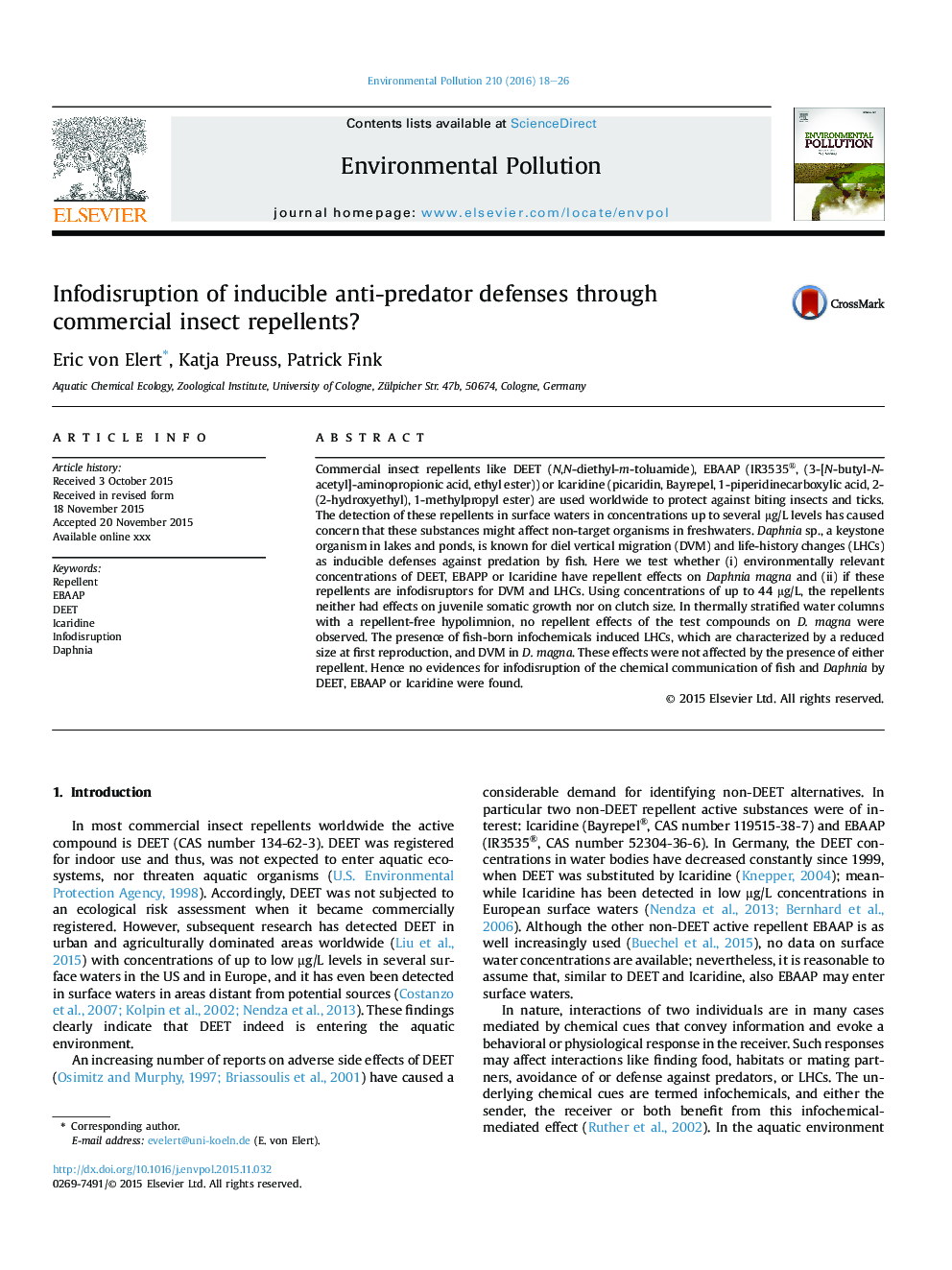| کد مقاله | کد نشریه | سال انتشار | مقاله انگلیسی | نسخه تمام متن |
|---|---|---|---|---|
| 6315067 | 1619163 | 2016 | 9 صفحه PDF | دانلود رایگان |
عنوان انگلیسی مقاله ISI
Infodisruption of inducible anti-predator defenses through commercial insect repellents?
دانلود مقاله + سفارش ترجمه
دانلود مقاله ISI انگلیسی
رایگان برای ایرانیان
کلمات کلیدی
موضوعات مرتبط
علوم زیستی و بیوفناوری
علوم محیط زیست
شیمی زیست محیطی
پیش نمایش صفحه اول مقاله

چکیده انگلیسی
Commercial insect repellents like DEET (N,N-diethyl-m-toluamide), EBAAP (IR3535®, (3-[N-butyl-N-acetyl]-aminopropionic acid, ethyl ester)) or Icaridine (picaridin, Bayrepel, 1-piperidinecarboxylic acid, 2-(2-hydroxyethyl), 1-methylpropyl ester) are used worldwide to protect against biting insects and ticks. The detection of these repellents in surface waters in concentrations up to several μg/L levels has caused concern that these substances might affect non-target organisms in freshwaters. Daphnia sp., a keystone organism in lakes and ponds, is known for diel vertical migration (DVM) and life-history changes (LHCs) as inducible defenses against predation by fish. Here we test whether (i) environmentally relevant concentrations of DEET, EBAPP or Icaridine have repellent effects on Daphnia magna and (ii) if these repellents are infodisruptors for DVM and LHCs. Using concentrations of up to 44 μg/L, the repellents neither had effects on juvenile somatic growth nor on clutch size. In thermally stratified water columns with a repellent-free hypolimnion, no repellent effects of the test compounds on D. magna were observed. The presence of fish-born infochemicals induced LHCs, which are characterized by a reduced size at first reproduction, and DVM in D. magna. These effects were not affected by the presence of either repellent. Hence no evidences for infodisruption of the chemical communication of fish and Daphnia by DEET, EBAAP or Icaridine were found.
ناشر
Database: Elsevier - ScienceDirect (ساینس دایرکت)
Journal: Environmental Pollution - Volume 210, March 2016, Pages 18-26
Journal: Environmental Pollution - Volume 210, March 2016, Pages 18-26
نویسندگان
Eric von Elert, Katja Preuss, Patrick Fink,